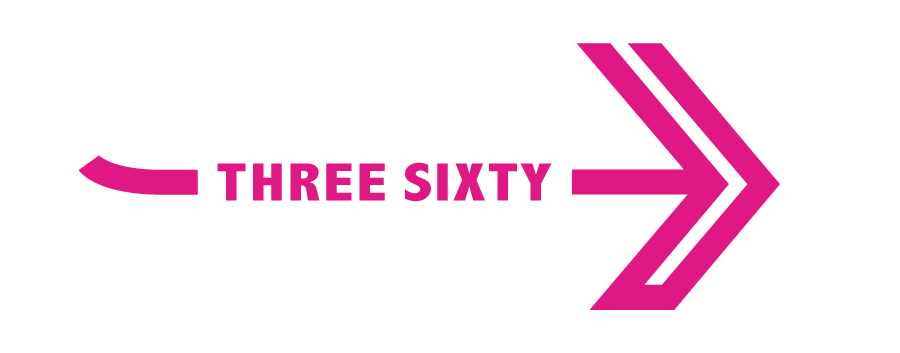Five steps towards a more strategic in-house legal team
Five steps towards a more strategic in-house legal team
It is common for organisations to have tightly resourced legal teams that always seem time poor. The best way to support the team is to have a clear strategic direction that governs their priorities. Here are 5 steps to get the ball rolling.
Setting a legal strategy can be a complex undertaking with numerous approaches and methodologies. To take the noise out of the process, it is important for general counsels (GCs) to agree on their objectives and be able to explain how these align with the organisation’s priorities.
Fundamentally, the key is delivering activities that further the organisation’s goals and priorities. In operating environments where demands of “more for less” are common, many prudent GCs recognise that the team should prioritise the maximum impact work. This is where the legal function can demonstrate its value, operate at high levels of control and minimise wasted effort. This is achievable with a clear and well-considered legal strategy.
What makes an excellent legal strategy?
In LEX360’s experience, a high-performing legal team has a strategy tailored to deliver legal priorities and business-as-usual activities that drive the organisation’s and customers’ needs. These strategies should carry a designed, documented and communicated approach to ensure transparency and clarity for all relevant stakeholders.
5 Steps to legal-ops success
1: Understand your environment
Working in a vacuum is never conducive. As organisations are very much part of the ecosystem they operate within, it is imperative that GCs carry out a situational analysis of factors that impact their key stakeholders to have a clear vision of what elements will impact any plans.
Deploying a tool like PESTLE (Political, Environmental, Social, Technology, Legal, Economic) during the situational analysis phase will help GCs simplify and understand the influences surrounding their decision-making.
2: Acknowledge where legal role in the business direction and align accordingly
GCs are increasingly judged by their capabilities in supporting the delivery of the organisation’s priorities. Therefore, GCs that align their deliverables and terminologies to business’ priorities; both aspirational (purpose, vision, values and reputation) and operational (budget, output, processes, delivery, development and share value), tend to be perceived as more successful.
VMOST (Vision, Mission, Objectives, Strategy & Tactics) is a useful tool to facilitate alignment. It documents each strategy level as cascading layers that clearly illustrate value-adding activities and those that are out of scope (which will not be undertaken).
Tools like VMOST not only create more linear lines of priority, but it also becomes a communication tool which clarifies the roles, responsibilities and contribution to the deliverables of each individual.
3: Define your short- and long-term focus areas
To build the strategy and tactic elements of the VMOST, GCs should consider the three-staged approach below:
- Collate Stakeholder Feedback: Having honest conversations about existing pain points from relevant stakeholders provides GCs with an indication of where to direct their focus towards. Typically, challenges can reside in situations where demand outstrips the capacity, poor communication/ lack of KPIs/ reporting, performance issues or even outside counsel behaviours.
- Undertake a SWOT Analysis: Identifying the legal function’s Strengths, Weaknesses, Opportunities, and Threats give GCs a clear picture of where resources and capabilities lie within the team. Working in tandem with the PESTLE analysis earlier, GCs can ascertain opportunities for improvement and optimisations.
- Cascade Findings: Earlier in this blog, we discussed how it is not conducive to work in a vacuum. A strategy is as strong as the clarity and buy-in from all involved. By communicating the focus areas with relevant internal stakeholders, GCs are able to drive focus areas with less confusion from other departments. Team members also understand their line of sight to the business priorities and their contribution.
4: Roadmap your delivery
To avoid a stumbling start towards delivery, a clearly illustrated roadmap will provide an unambiguous commencement point and processes that lead up to delivery. While focus areas provide direction and structure, a roadmap provides the key people accountable for delivery. A RACI (Responsible, Accountable, Consulted and Informed) exercise will provide clarity in owners and accountability. A strong delivery roadmap should always include the following:
- The expected outcomes.
- Agreed timelines.
- Defined workstreams (people, process, technology) and of course.
- Key deliverables that each workstream is responsible for.
5: Delivery
It is common to find that there will be shortcomings between a legal strategy's planning and implementation stages. Whether the reason is due to a lack of time or effort spent on establishing the links between focus areas and high-level deliverables or due to a lack of governance and accountability, it does not negate the importance of a clear strategy and persevering through the delivery in the long run.
To avoid this breakdown, it is important to adhere to the agreed governance approaches and KPIs while tracking the delivery of associated actions.
It may also be necessary to undertake one-off events like After Action Reviews or Lessons Learnt exercises. This provides a clear and non-judgmental space to make adjustments and improvements to strategies and tactics in the long run.
Seek experts who recognise that strategies are not one size fit all
If GCs are looking for external consultants to assist in the strategy-building process, it is important that the consultants are sympathetic to the unique challenges and opportunities within the organisation.
LEX360 has delivered a systems-thinking approach to optimising legal services for clients for them to achieve maximum behavioural change from the strategic transformation. Clients can count on LEX360 to be the reliable constant in their legal transformation – from helping them understand the magnitude of challenges to coaching their teams to deliver sustainable solutions.
LEX360’s principal consultant Mo Zain Ajaz is the former GC and Global Operations VP for National Grid. He delivered efficiencies outside counsel, legal technologies and process improvements. Mo’s contribution to legal operations transformation has been recognised by various industry thought leaders, including Lawyer, Legal 500, College of Legal Practice Management, Legal Week and Lean Six Sigma Institute.
Driving value (‘achieving more for less’) through right sourcing legal services “demand management”
Legal functions that have designed their legal services with the business in mind understand the demand on them today and have mechanisms to appreciate future demand. They can then ensure that the right sourcing (self-service, insource and outsource) happens at the right price point and an acceptable risk threshold, thereby reducing waste and driving costs and process efficiency.
The terms “demand”, “triage”, or “capacity management” are used interchangeably and refer to the end-to-end process of workload management. These encompass forecasting and prioritising work, creating workflows, and ultimately delivering an effective output at the right level for the right cost.
In the world of Lean Enterprise, true demand management refers to smoothing your workflow to provide a steady, continuous, and manageable flow of work with no bottlenecks and no extreme pressure on your workforce.
Why should demand management be a priority for you?
Tangible benefits (costs, speed, value, recognition of the team value and people development) can be achieved through Demand Management as it plays a critical part in delivering an optimised legal service by providing visibility of future and current work, in turn, allowing teams to deliver legal services in an efficient manner.
Understanding the pipeline of work, and sourcing it appropriately, will deliver cost savings, improve team elements such as morale, engagement and retentions and also enable the GC to deliver and perform effectively within an appropriate risk threshold.
What value can I, as a GC or business leader, drive from Demand Management?
Below are some of the impacts of Demand Management taken from LEX360 engagement on legal service design:
Consequence of a poorly constructed Demand Management system: Value arising from a considered Demand Management system:

- No distinction between legal work and non-legal work being completed by the team.
- No visibility of the work pipeline resulting in cost and budget concerns.
- An overworked or underutilised legal team
- Low customer satisfaction around perceived legal service delivery.
- Non-conformance with customer expectations regarding cost, quality, and delivery
- Negative impact on team development and retention
- Outside counsel being engaged in an ad-hoc manner.
Value arising from a considered Demand Management system:

- The agreed framework for the expected demand (self-service, insource and outsource model)
- Improved visibility and planning & associated improved control.
- Measurement of the legal function against agreed expectations on work type, demand, and costs
- Most appropriate individuals completing appropriate work.
- Internal development and retention.
- For in-house functions – less work is sent externally, so lower costs.
- Effective use of outside counsel – visibility and throughput certainty resulting in a win-win outsourcing relationship
Why do GCs struggle to embed an effective Demand Management system?
The systematic approach to Demand Management requires an understanding of current and future demand, which must be overlaid with current and future capacity (internal and external). The Ishikawa image below captures some of LEX360’s findings regarding the issues that need to be mitigated to ensure that an effective solution is embedded.
How can a GC drive value through right sourcing legal services “demand management”?
To maximise the value from a right-sourced demand management approach, LEX360 can help you with the following key process steps;
- Understand and agree on the scope of your Legal Teams – link the business expectations with the reality. Identify what work should be delivered by the business via self-service (drafting or automation), what work will be delivered internally (based on complexity, risk, development needs, and resource constraints), what work should be completed externally (packages managed services, complex or resource-driven work) and how that should be delivered (panel, alternatives, locums etc.)
- Demand forecasting process – based on data and business partner conversations.
- Establish an intake and matter management system to understand demand – analysing your current and past throughput, the upcoming pipeline of work, and managing capacity to meet these delivery needs.
- Right-source work through allocation – this should be aware of budget and resource constraints.
- Data & Dashboards to drive decision making – inclusive of measurement of output and conformance with KPIs.
- Linking to your people plan should include consideration of development and succession opportunities and planning and then links as a measure when you consider capability levels, retention, and engagement.
- Utilising Self-service tools – where possible, self-service tech can reduce the impact on your teams, reduce the likelihood of human error and boost customer scores.
- Delivery – utilising policy and process to drive standard ways of working and deployment throughout your teams.
- The utilisation of contract construction, review and papering tools and other Legal Technologies – such as workflows, PowerApps tools and digital methods to work more effectively.
- Stakeholder engagement – comms on matters, Management information review and actions such as regarding NPS scores.
At LEX360, we pride ourselves on our in-depth sector experience and customer-centric approach to consulting. Let us help you establish an optimal legal function that manages demand in a systematic manner whilst demonstrating the value that your team adds to the success of your business.

